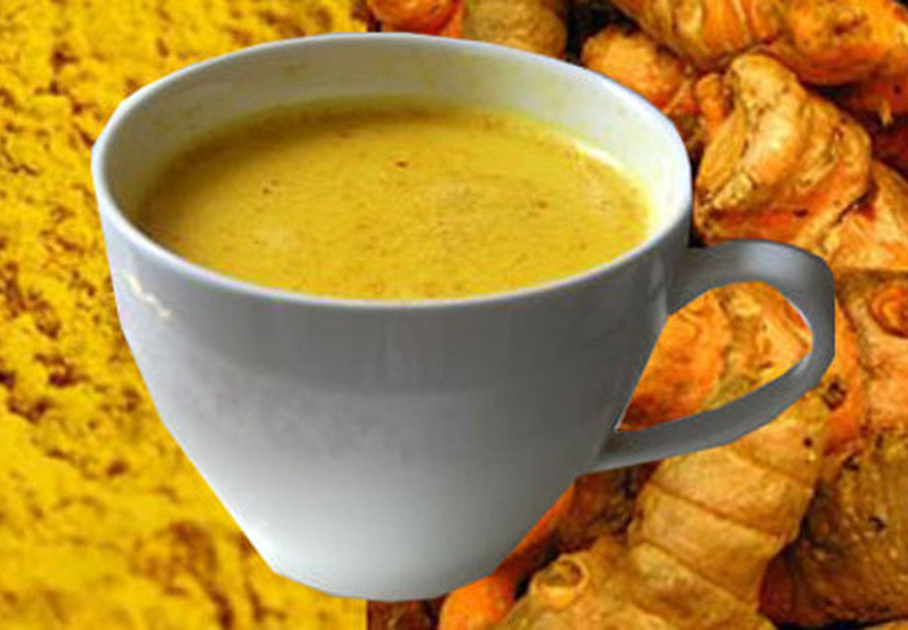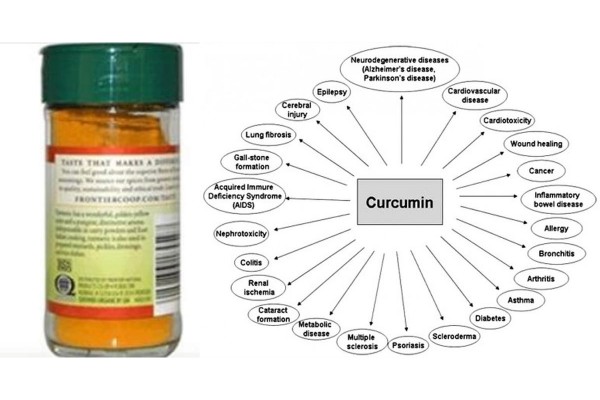- 196,900 Canadians will be diagnosed with cancer in 2015
- 78,000 Canadians will die of cancer in 2015
- 2 in 5 Canadians will develop cancer in their lifetime
- 1 in 4 Canadians will die from cancer
These scary numbers taken from a report written by Canadian Cancer Society’s Advisory are very alarming. Have a look around you and imagine that 1 out of 4 of the people you see or know will die from cancer. I personally can’t grasp this idea. It blows my mind to think that so many people are affected by this disease. When I look at the services provided by the different cancer agencies I see very little information about what people should do to avoid getting cancer. They raise money for the cure, researches, for finding new drugs and medications, but where does this all summed up to when it comes to avoiding cancer in the first place? Are you ever told what to do to avoid getting cancer? Do you ever stop and wonder WHY this is? Why so many people are affected by cancer? What is the cause, the true cause?
I will shed some light on a few things you can do to stay healthy. You will find out in my article 10 easy ways to prevent cancer. Some of these ways are easy to apply in your daily routine and some others will require a little effort. But when you really think about it… isn’t your health worth the effort? Are you willing to gamble on your life about some little changes? Go ahead and read the article to find out what these 10 easy ways are… You will see it’s not that hard…
- Optimize Your Vitamin D
If you want to slash your risk of cancer, it’s essential that you spend adequate time in the sun, or if that’s not possible supplement with proper amounts of vitamin D3. Just be cautious about the length of your exposure. You only need enough exposure to have your skin turn the lightest shade of pink. Once you reach this point your body will not make any additional vitamin D due to its self-regulating mechanism. Any additional exposure will only cause harm and damage to your skin.
The daily recommended intake of a vitamin D3 supplement is only 600 IU/day but researchers have found that a daily intake of 4000-8000 IU/day are absolutely needed to maintain blood levels of Vitamin D metabolites to reduce the risk of cancer by half. The ‘normal’ 25-hydroxyvitamin D lab range is between 20-56 ng/ml but the vitamin D3 level should never be below 32 ng/ml, and any levels below 20 ng/ml are considered a seriously deficient state, increasing your risk of getting, as many as 16 different cancers and autoimmune diseases; like multiple sclerosis and rheumatoid arthritis, just to name a few.
If you’re taking oral vitamin D, you also need to make sure you’re taking vitamin K2 as well, as K2 deficiency is actually what produces the symptoms of vitamin D toxicity, which includes inappropriate calcification that can lead to hardening of your arteries.
The OPTIMAL value to look for is 50-70 ng/ml (or 125-175 nmol/L). This range applies for everyone; children, adolescents, adults and seniors.
- Avoid Eating Excess Protein
Most of us eat far too much protein. Consider reducing your protein levels to one gram per kilogram of lean body weight unless you are in competitive athletics or are pregnant. It would be unusual for most adults to need more than 100 grams of protein and most likely need close to half that amount. This may come as a surprise, as we’ve been told for decades how important protein is for your health, but the truth is that excessive protein intake can have a great impact on cancer growth.
For most people, reducing your protein levels to one gram per kilogram of lean body weight means restricting protein intake from 35 to 75 grams. Pregnant women and those working out extensively need about 25% more protein, though. Further, when you reduce protein you need to replace it with other calories, specifically high-quality fats such as avocados, butter, coconut oil, olives, olive oil, nuts and eggs.
- Eat Living Foods with Amazing Health Benefits
Sprouts are a “super” food that many overlook. In addition to their nutritional profile, sprouts are also easy to grow on your own.
- Sprouts can contain up to 100 times more enzymes than raw fruits and vegetables, allowing your body to extract more vitamins, minerals, amino acids and essential fats from the foods you eat
- Both the quality of the protein and the fiber content of beans, nuts, seeds and grains improves when sprouted
- The content of vitamins and essential fatty acids also increase dramatically during the sprouting process. For example, depending on the sprout, the nutrient content can increase as much as 30 times the original value within just a few days of sprouting. Sunflower seed and pea sprouts tend to top the list of all the seeds that you can sprout and are typically each about 30 times more nutritious than organic vegetables you can even harvest in your backyard garden
- During sprouting, minerals, such as calcium and magnesium, bind to protein, making them more bioavailable
- Sprouts are the ultimate locally grown food, and can easily be grown in your own kitchen, so you know exactly what you’re eating. And since they’re very inexpensive, cost is no excuse for avoiding them
- Simplify Your Cleaning Supplies
While it is very difficult to prove that a person’s exposure to household cleaners over the course of 10, 20 or 30 years is what caused their cancer diagnosis, it is well known that commonly used household chemicals do, in fact, cause cancer, along with other serious health effects like reproductive and developmental problems in developing children.
Research has found, for instance, that breast cancer risk is twice as high among women who report the most use of cleaning products and air fresheners, compared to those who rarely use such products. Mold and mildew cleaners and air fresheners have shown the greatest correlation with breast cancer.
Some of the chemicals of greatest concern that you’ll want to avoid include:
- Glycol ethers
- Phosphates
- Phthalates
- Nonylphenol ethoxylates (NPEs)
- Petroleum solvents
- Perfumes
- Formaldehyde
- Butyl cellosolve
- Chlorine
- Ethanolamine
- Sodium lauryl sulfate
Fortunately, it’s simple to replace toxic commercial cleansers with safer options. One of the best non-toxic disinfectants is plain soap and water. You can use this for washing your hands, your body and for other household cleaning. Another all-purpose cleaner that works great for kitchen counters, cutting boards and bathrooms is 3% hydrogen peroxide and vinegar. You can also keep your home very fresh and clean by making your own natural cleaning products using items you probably already have around your home. Some more tips for making simple and effective all-natural cleansers:
- Use baking soda mixed with apple cider vinegar to clean drains and bathtubs, or sprinkle baking soda along with a few drops of lavender oil or tea tree oil (which have antibacterial qualities) as a simple scrub for your bathroom or kitchen.
- Vinegar can be used to clean almost anything in your home. Try it mixed with liquid castile soap, essential oils and water to clean floors, windows, bathrooms and kitchens. It can even be used as a natural fabric softener.
- Hydrogen peroxide is safer to use than chlorine bleach for disinfecting and whitening.
- Use Greener Beauty Products
When cleaning up your lifestyle you may be tempted to start with your diet (which is a good place to start), but your personal care products are also important to address. Putting chemicals on your skin is actually far worse than ingesting them, because when you eat something everything must go to your liver before entering your blood stream, providing your body an opportunity to detoxify substances that could be harmful. When you put chemicals on your skin however, they’re absorbed straight into your bloodstream without filtering of any kind, so the toxic chemicals from toiletries and beauty products are largely going into your blood, lymphatic system and then directly into your internal organs.
There are literally thousands of chemicals used in personal care products, and only a tiny fraction of them have ever been tested for safety. According to the National Institute of Occupational Safety and Health, nearly 900 of the chemicals used in cosmetics are known to be toxic. It’s impossible to list them all, but some of the most common culprits to avoid include:
- Sodium lauryl sulfate (SLS)
- Musks
- Mercury
- Paraben
- 1, 4-Dioxane
- Lead
- Phthalates, including dibutyl phthalate (DBP), dimethyl phthalate (DMP), and diethyl phthalate (DEP)
- Mineral Oil, Paraffin, and Petrolatum
- Nano Particles
- Antibacterials
- Hydroquinone
- Formaldehyde
When it comes to personal care products, I like to use this rule — if you wouldn’t eat it, don’t put it on your body. I also highly recommend using the Environmental Working Group’s Skin Deep Cosmetic Safety Database, where you can look up a wide variety of products and brands to find out what they’re really made of, and whether or not they’re safe. You can also make your own personal care products, using simple all-natural ingredients that many of you may already have in your home.
- All-natural moisturizers – Cacao butter or coconut oil are a great alternative to facial- and body moisturizers and lotions.
- All-natural acne fighter — Rubbing just a drop of oregano oil on a breakout can speed up the healing and prevent unsightly scarring (remember to wash your hands thoroughly afterward).
- All-natural deodorant – Plain soap and water works fine. If you still need further help then try a pinch of baking soda mixed into water as an effective all-day deodorant.
- Ditch Your Non-Stick Cookware
About 70 percent of the cookware sold in the US contains a non-stick coating that contains PFOA (perfluorooctanoic acid) and other perfluorinated compounds (PFCs), which are used to make grease-resistant food packaging and stain-resistant clothing as well. Even though there are many names, if the item in question is “non-stick” or “stain/grease resistant,” it will generally have some type of fluoride-impregnated coating that is best avoided.
It’s well documented that when non-stick pans are heated the coating begins breaking down, releasing toxins into the air in your kitchen. When the pan reaches 680 degrees F (which takes about three to five minutes of heating), at least six toxic gases are released. At 1,000 degrees F, the coatings on your cookware break down into a chemical warfare agent known as PFIB. Research has revealed that these toxins can accumulate in your blood at an alarming rate and may lead to chronic disease like cancer over time. You can keep your exposure as low as possible by avoiding (or getting rid of) products that contain PFCs. This includes:
- Non-stick cookware (choose either ceramic or glass instead)
- Microwave popcorn
- Packaging for greasy foods (including paper and cardboard packaging)
- Stain-proof clothing
- Flame retardants and products that contain them
- Stain-resistant carpeting, and fabric stain protectors
- Drink Clear Pure Water
If you receive municipal water that is treated with chlorine or chloramines, toxic disinfection byproducts (DBPs) form when these disinfectants react with natural organic matter like decaying vegetation in the source water. DBPs are over 1,000 times more toxic than chlorine, and out of all the other toxins and contaminants present in your water, such as fluoride and miscellaneous pharmaceutical drugs, DBPs are likely the absolute worst of the bunch.
Already, it’s known that trihalomethanes (THMs), one of the most common DBPs, are Cancer Group B carcinogens, meaning they’ve been shown to cause cancer in laboratory animals. They’ve also been linked to reproductive problems in both animals and humans, such as spontaneous abortion, stillbirths, and congenital malformations, even at lower levels. A whole-house filtration system is your best choice to remove chlorine, chloramine, ammonia, DBPs and other contaminants from all of your water sources (bath, shower and tap). If you don’t have the resources for a whole-house filtration system at this time, there are a couple of other tricks you can try. Visit Water Matters (http://yourwatermatters.com ) to buy very good filters or at FindaSpring.com you can identify local springs where you can get pure. You can also try:
- Adding fruit, such as slices of peeled orange, to a 1-gallon water pitcher, which will help neutralize chloramine in about 30 minutes
- Dissolving a 1,000-mg vitamin C tablet into your bath water, this will neutralize the chloramine in an average-size bathtub.
- Choose Organic and Locally Grown Food
Many pesticides and herbicides are potentially carcinogenic, and you may be exposed to them when you eat conventionally grown produce and animal products. The US Environmental Protection Agency (EPA) considers 60 percent of herbicides, 90 percent of fungicides, and 30 percent of insecticides to be carcinogenic, and most are also damaging to your nervous system as well.
The answer, of course, is to opt for organically grown produce and organically raised, pastured animal products, which are raised without chemicals and other potentially cancer-causing products.
It’s well known that conventionally grown fruits and vegetables are often tainted with unacceptable levels of pesticide residues, but you’re also exposed when you eat animal products. Animals raised in confined animal feeding operations (CAFO’s) eat feed full of pesticides, and these toxins accumulate in their flesh and fat over the course of their lifetimes. When you eat factory-farmed meat, you then ingest these accumulated pesticides.
As for fresh produce, certain fruits and vegetables tend to be far more contaminated than others, simply because they’re more susceptible to various infestations and therefore sprayed more heavily. Some foods are also more “absorbent,” with thin, tender skins. Such foods would be high on your list for buying organic. The Environmental Working Group (EWG) produces an annual shopper’s guide to pesticides in produce that you can download. It lists the produce with the highest and lowest levels of pesticide residue, which can help save you money if you can’t afford to buy everything organic.
Choosing organically raised animal products is potentially even more important, however, as animal products tend to bio-accumulate toxins from their pesticide-laced feed, concentrating them to far higher concentrations than are typically present in vegetables.
- Skip the Canned Foods
Avoiding canned foods is perhaps your best way to avoid bisphenol-A (BPA) – an endocrine-disrupting chemical linked to cancer and reproductive and fetal development problems, among other health issues.
Though BPA is a widely used component of plastic containers, it’s also found in food packaging and the inner lining of cans. Research from the Harvard School of Public Health revealed that canned foods and beverages can increase your BPA levels by a staggering 1,000 percent in a mere five days! The lead researcher noted that given this finding, canned goods may be an even greater contribution to your BPA levels than plastics. Here are 10 tips to help reduce your exposure to BPA around the house:
- Only use glass baby bottles and dishes for your baby
- Use glass, ceramic, or stainless steel travel coffee mugs rather than plastic or Styrofoam coffee cups
- Get rid of your plastic dishes and cups, and replace them with glass varieties
- Avoid using plastic wrap (and never microwave anything covered in it)
- Give your baby natural fabric toys instead of plastic ones
- If you opt to use plastic kitchenware, at least get rid of the older, scratched-up varieties, avoid putting them in the dishwasher, and don’t wash them with harsh detergents, as these things can cause more chemicals to leach into your food
- Store your food and beverages in glass containers
- IF you choose to use a microwave (see #10 below), don’t microwave food in a plastic container
- Before allowing a dental sealant to be applied to your, or your children’s, teeth, ask your dentist to verify that it does not contain BPA
- Ditch Your Microwave
If you microwave your food in plastic containers, it can hasten the rate at which potentially cancer-causing chemicals can leach into your food. Additionally, microwaving creates new compounds that are not found in humans or in nature, called radiolytic compounds. We don’t yet know what these compounds are doing to your body.
In addition to the violent frictional heat effects, called thermic effects, there are also athermic effects, which are poorly understood because they are not as easily measured. It is these athermic effects that are suspected to be responsible for much of the deformation and degradation of cells and molecules. As an example, microwaves are used in the field of gene-altering technology to weaken cell membranes. Scientists use microwaves to actually break cells apart. Impaired cells then become easy prey for viruses, fungi and other microorganisms. You really CAN survive sans microwave—people are living quite happily without one, believe it or not. You just have to make a few small lifestyle adjustments, such as:
- Plan ahead. Take your dinner out of the freezer that morning or the night before so you don’t end up having to scramble to defrost a 5-pound chunk of beef two hours before dinnertime.
- Make soups and stews in bulk, and then freeze them in gallon-sized freezer bags or other containers. An hour before meal time, just take one out and defrost it in a sink of water until it’s thawed enough to slip into a pot, then reheat it on the stove.
- A toaster oven makes a GREAT faux-microwave for heating up leftovers! Keep it at a low temperature — like 200-250 degrees F — and gently warm a plate of food over the course of 20-30 minutes. Another great alternative is a convection oven.
- Prepare your meals in advance so that you always have a good meal available on those days when you’re too busy or too tired to cook.
- Try eating more organic raw foods. This is one of the best ways to improve your health over the long run.
Source http://articles.mercola.com/sites/articles/archive/2013/04/22/cancer-prevention.aspx#_edn7






